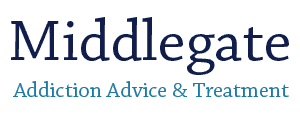The eight stages of the Strengths Model provide a structured framework for guiding individuals towards achieving their goals:
The Life Story
This stage involves exploring the individual’s life story, including their personal history, experiences, and relationships. It encourages self-reflection and introspection, helping individuals gain insight into the factors that have contributed to their addiction and shape their identity.
Addiction and Me
In this stage, individuals examine the impact of addiction on their lives, relationships, and well-being. They confront the realities of addiction, including its negative consequences and challenges, and begin to spot the need for change and recovery.
My Strengths
The focus of this stage is on identifying and harnessing the individual’s strengths, abilities, and resources. It encourages individuals to ackolowledge their inherent capabilities and positive qualities, such as resilience, determination, and creativity, which can serve as foundations for recovery.
Changes
This stage involves setting goals and making concrete changes in behaviour, attitudes, and lifestyle to support recovery. Individuals work collaboratively with their support system to develop actionable steps towards achieving their goals and overcoming obstacles to change.
Personal Issues
In this stage, individuals address personal issues and challenges that may hinder their recovery, such as trauma, mental health issues, or unresolved conflicts. They explore these issues in a safe and supportive environment, seeking understanding, healing, and resolution.
Amends
The amends stage focuses on repairing and rebuilding relationships that have been damaged by addiction. Individuals take responsibility for their actions, apologise for past harm, and make amends to those they have hurt. This process promotes healing, forgiveness, and reconciliation.
The Future
In this stage, individuals envision their future beyond addiction, setting long-term goals and aspirations for themselves. They cultivate hope, optimism, and a sense of purpose, envisioning a life filled with meaning, fulfilment, and possibility.
Relapse Prevention
The final stage involves developing strategies and skills to prevent relapse and maintain long-term recovery. Individuals learn to identify triggers, cope with cravings, and utilise healthy coping mechanisms to navigate challenges and setbacks. They also build a support network and create a relapse prevention plan to safeguard their sobriety and well-being.


